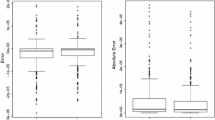Abstract
The warm-glow model (Andreoni in J Political Econ 97:1447–1458, 1989; Econ J 100:464–477, 1990) of public goods provision has received widespread interest, yet surprisingly most attention has focused on the voluntary contribution equilibrium of the model, and only very little attention has been devoted to the competitive equilibrium. In this paper, we introduce the concept of competitive equilibrium for a warm-glow economy (henceforth, warm-glow equilibrium) and establish both existence and welfare properties. The warm-glow equilibrium concept may prove to be very useful to the normative and positive theory of public goods provision. First, it is a price-based mechanism achieving efficient outcomes. Second, not only could the warm-glow equilibria outcomes serve as a point of reference to measure free-riding and welfare loss but also, as suggested by Bernheim and Rangel (Behavioral Economics and Its Applications, 2007), in large economies they may be approximated by Walrasian equilibria outcomes.
Similar content being viewed by others
References
Allouch N.: A core-equilibrium convergence in a public goods economy. J Public Econ Theory 12, 857–870 (2010)
Andreoni J.: Giving with impure altruism: applications to charity and Ricardian equivalence. J Political Econ 97, 1447–1458 (1989)
Andreoni J.: Impure altruism and donations to public goods: a theory of warm glow giving. Econ J 100, 464–477 (1990)
Andreoni J.: Philanthropy. In: Kolm, S.C., Ythier, J.M. (eds) Handbook of the Economics of Giving, Altruism and Reciprocity, Elsevier, North-Holland, Amsterdam (2006)
Becker G.S.: A theory of social interactions. J Political Econ 82, 1063–1093 (1974)
Bergstrom T., Blume L., Varian H.: On the private provision of public goods. J Public Econ 29, 25–49 (1986)
Bernheim B.D., Rangel A.: Behavioral public economics: welfare and policy analysis with nonstandard decision-makers. In: Diamond, P., Vartiainen, H. (eds) Behavioral Economics and Its Applications, Princeton University Press, Princeton (2007)
Chen Y.: A family of supermodular Nash mechanisms implementing Lindahl allocations. Econ Theory 19, 773–790 (2002)
Condie S., Ganguli J.V.: Ambiguity and rational expectations equilibria. Rev Econ Stud 78, 821–845 (2011)
Condie S., Ganguli J.V.: Informational efficiency with ambiguous information. Econ Theory 48, 229–242 (2011)
Conley J.P.: Convergence theorems on the core of a public goods economy: sufficient conditions. J Econ Theory 62, 161–185 (1994)
Cornes R., Sandler T.: Easy riders, joint production, and public goods. Econ J 94, 580–598 (1984)
Correia da Silva J., Herves-Beloso C.: Prudent expectations equilibrium in economies with uncertain delivery. Econ Theory 39, 67–92 (2009)
Correia da Silva, J., Herves-Beloso, C.: General equilibrium in economies with uncertain delivery. Econ Theory (2012). doi:10.1007/s00199-011-0647-1
Debreu G., Scarf H.: A limit theorem on the core of an economy. Int Econ Rev 4, 235–246 (1963)
De Castro L., Pesce M., Yannelis N.: Core and equilibria under ambiguity. Econ Theory 48, 519–548 (2011a)
De Castro, L., Pesce, M., Yannelis, N.: A new perspective to rational expectations: maximin rational expectations equilibrium. Preprint, University of Illinois, Urbana-Champaign (2011b)
De Simone A., Graziano M.G.: The pure theory of public goods: the case of many commodities. J Math Econ 40, 847–868 (2004)
Florenzano M., Del Mercato E.: Edgeworth and Lindahl-Foley equilibria of a general equilibrium model with private provision of pure public goods. J Public Econ Theory 8, 713–740 (2006)
Foley D.: Lindahl’s solution and the core of an economy with public goods. Econometrica 38, 66–72 (1970)
Gaube T.: Altruism and charitable giving in a fully replicated economy. J Public Econ 90, 1649–1667 (2006)
Kaneko M.: The ratio equilibrium and a voting game in a public goods economy. J Econ Theory 16, 123–136 (1977)
Kingma R.: An accurate measurement of the crowd-out effect, income effect, and price effect for charitable contributions. J Political Econ 97, 1197–1207 (1989)
Lindahl, E.: Positive losung, die gerechtigkeit der besteuering, translated as “Just taxation—a positive solution,”. In: Musgrave, R.A., Peacock, A.T. (eds.) Classics in the Theory of Public Finance, London: Macmillan (1919)
Mas-Colell A., Silvestre J.: Cost share equilibria: a Lindahlian approach. J Econ Theory 47, 239–256 (1989)
Moreno, D., Moscoso, M.J.: Strategy-proof allocation mechanisms for economies with public goods. Econ. Theory (2012). doi:10.1007/s00199-011-0627-5
Ozsoylev, H., Werner, J.: Liquidity and asset prices in rational expectations equilibrium with ambiguous information. Econ. Theory (2012). doi:10.1007/s00199-011-0648-0
Ribar D.C., Wilhelm M.O.: Altruistic and joy-of-giving motivations in charitable behavior. J Political Econ 110, 425–457 (2002)
Van den Nouweland A., Tijs S., Wooders M.: Axiomatization of ratio equilibria in public good economies. Soc Choice Welf 19, 627–636 (2002)
Warr P.G.: The private provision of a public good is independent of the distribution of income. Econ Lett 13, 207–211 (1983)
Wooders M.: Equivalence of Lindahl equilibrium with participation prices and the core. Econ Theory 9, 115–127 (1997)
Author information
Authors and Affiliations
Corresponding author
Additional information
I thank Ted Bergstrom, Richard Cornes, Clive Fraser, Judith Payne, Herakles Polemarchakis, Bryony Reich, Mich Tvede, Chris Tyson, and seminar participants at Warwick, Cambridge, East Anglia, Copenhagen, CORE, Kent, Vanderbilt, Maastricht, PET 2008, SAET 2009, and York GEdays 2011 meetings for insightful comments. I am also very indebted to two anonymous referees and the editor Nicholas Yannelis for many valuable suggestions that substantially improved the paper. The hospitality of the University of Cambridge, Department of Economics is gratefully acknowledged.
Rights and permissions
About this article
Cite this article
Allouch, N. A competitive equilibrium for a warm-glow economy. Econ Theory 53, 269–282 (2013). https://doi.org/10.1007/s00199-012-0689-z
Received:
Accepted:
Published:
Issue Date:
DOI: https://doi.org/10.1007/s00199-012-0689-z




